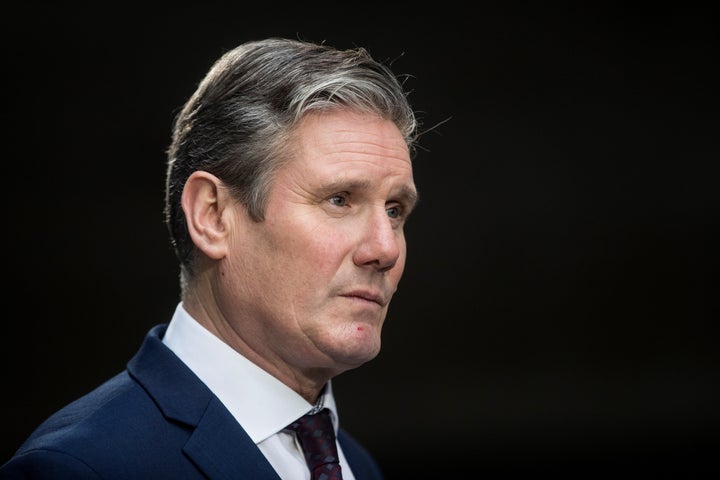Even as many nations struggle to control the coronavirus pandemic, politicians are facing increasing pressure to chart a course out of the crisis and announce plans for resuming social and economic activity.
“Although it is clear that the path back to normalcy will take a long time, it is also obvious that we cannot maintain these extraordinary restrictions indefinitely,” EU Commission President Ursula von der Leyen says in a document set to be unveiled on Wednesday outlining the EU’s roadmap for lifting coronavirus restrictions.
The plan calls for member states to coordinate easing their restrictions, and acknowledges it may be many weeks or months before such measures can be lifted completely.
“We will have to live with the virus until a vaccine has been developed,” von der Leyen states.
Already, at least a half-dozen European countries, including Austria, Denmark, Spain, Italy, and the Czech Republic, have begun lifting their containment measures, allowing certain nonessential businesses, such as bookshops, hardware stores, garden centers, and manufacturing firms, to reopen.
The EU roadmap, along with the early moves that nations have taken on their own, highlights the dilemma that many countries face as they struggle to protect the public from the coronavirus while also recognizing the strain that the lockdown measures are causing for individuals, families and the economy.
Lifting the restrictions too soon, or relaxing them too much, could allow the virus to surge back, potentially costing thousands more lives. Maintaining the measures for too long, however, could cause other forms of harm.
“We agree the measures need to remain in place, but to maintain morale and hope, people need a sense of what comes next,” Keir Starmer, the new head of the UK’s opposition Labour Party, said this week in a letter to foreign secretary Dominic Raab, who is filling in for Prime Minister Boris Johnson while he recovers from the coronavirus. “The silent pressures on communities across the country cannot be underestimated.”

Starmer cited people struggling with mental health and other conditions that may be going untreated during the crisis, individuals suffering from loneliness and isolation, and people worried about losing their jobs and making ends meet.
“This lockdown is not affecting people equally. In fact, it has exacerbated existing inequalities in our country,” Starmer said. “A family living in an overcrowded flat will have particular challenges. And it is hard to imagine the daily horror of someone trapped in a home with his or her abuser. The government has a duty to do what it can to alleviate these pressures on people.”
The UK government plans to announce this week that the country’s lockdown will continue. In his letter, Starmer demanded that the government publish its exit strategy in the coming week, but Downing Street has resisted such calls.
“Talk of an exit strategy before we have reached the peak risks confusing the critical message that people need to stay at home in order to protect our NHS and save lives,” a government source said, according to HuffPost UK.
Linda Bauld, a public health professor at the University of Edinburgh and former government adviser, predicted that primary schools could be among the first public institutions to reopen as part of the gradual lifting of the UK’s coronavirus lockdown. The resumption of school would free many adults to return to work.
“From my understanding, there is a very strong desire by government to get the schools open,” Bauld told HuffPost UK. “Then the question is: Do they have a phased return? For example, do they only allow half the class to go in and they teach for half a day? And then they rotate and the other half of the class go back in the afternoon? That seems to me possible.”
“So, I think that in order to get more of the working-age population, the parents, at a better level, even if they’re still working from home, schools are going to be a priority.”
Bauld acknowledged, however, that widespread testing and contact tracing would be essential to any exit strategy. “We need to continue to [maintain restrictions], and probably we need to continue to do that in public for quite some time — until we’ve got our testing and contact tracing system better set up,” she said. “You’re probably looking at a few months.”
That assessment was echoed by WHO Director-General Tedros Adhanom Ghebreyesus, who emphasized at a news conference on Monday that lifting restrictions would need to happen slowly, and only in combination with a more robust system of virus surveillance.
“It cannot happen all at once,” Tedros said. “Control measures can only be lifted if the right public health measures are in place, including significant capacity for contact tracing.”

In Italy, politicians have been eager to begin discussing “phase two,” when restrictions can be lifted, but public health officials have pushed back strongly against talking about such plans, arguing that the country is still struggling to control the virus.
And while researchers are rushing to study COVID-19, many questions remain unanswered, such as whether people who recover from the virus develop immunity — making it difficult for politicians to plan an exit strategy.
“I ask the scientific community, without controversy, to give us irrefutable certainties and not three or four options for each topic,” Francesco Boccia, Italy’s minister for regional affairs, said recently, according to HuffPost Italy. “Can those who have already had the virus be reinfected? There is no answer. The same goes for serological tests. We demand clarity, otherwise the science is useless. We politicians take responsibility for making decisions, but scientists have to put us in a position to do so. We can’t sit still until a vaccine arrives.”
It is likely, therefore, that more countries will start to lift restrictions slowly and gradually, and impose stronger lockdown measures again if the virus starts to surge back — balancing public health with broader social and economic considerations.
Ultimately, however, waiting for a vaccine may be the only true way out of the pandemic.
“Our global connectedness means the risk of reintroduction and resurgence of the diseases will continue,” Tedros said. “Ultimately, the development and delivery of a safe and effective vaccine will be needed to fully interrupt transmission.”
With reporting from HuffPost UK, HuffPost Italy, and HuffPost Spain.
- Stay up to date with our live blog as we cover the COVID-19 pandemic
- What you need to know about face masks right now
- How long are asymptomatic carriers contagious?
- Lost your job due to coronavirus? Here’s what you need to know.
- Can someone outside of your household quarantine with you now?
- Everything you need to know about coronavirus and grief
- The HuffPost guide to working from home
- What coronavirus questions are on your mind right now? We want to help you find answers.
- Everyone deserves accurate information about COVID-19. Support journalism without a paywall — and keep it free for everyone — by becoming a HuffPost member today.

